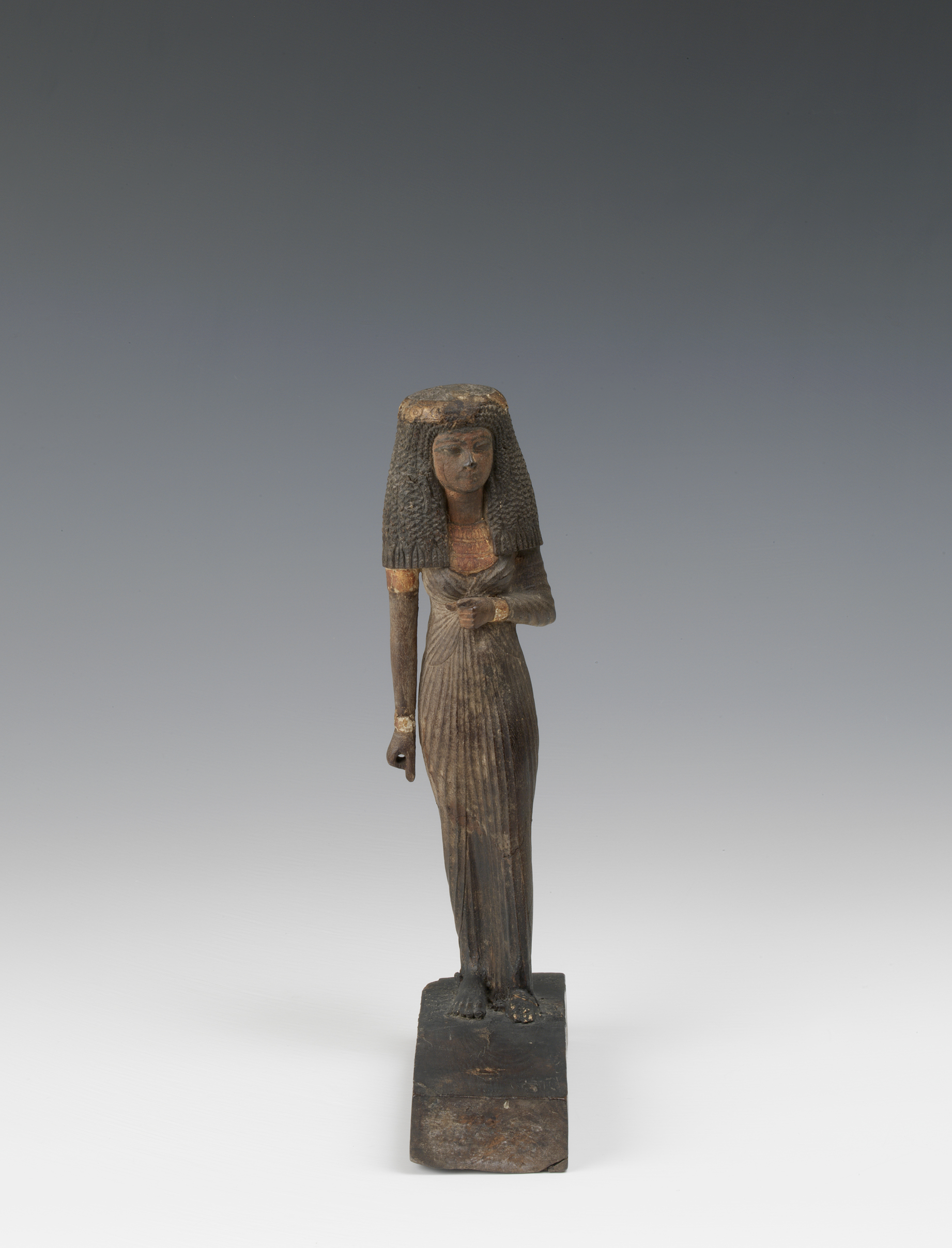
- Egypt, New Kingdom, late 18th Dynasty
- Polychrome wood and gold
- Inv. 121B
Female statuette
Finely sculpted in wood, this female figure is wearing highly sophisticated clothes comprising a long, pleated tunic that clings to her body and a heavy wig covering down to her shoulders, crowned by a partially lost diadem. Her hair seems tightly curled and ends in interwoven fringes, with two fringes leading from her forehead until halfway down the wig. The lady’s real hair appears on her forehead underneath the wig. It is painted black, as are her eyebrows and the outline round her eyes.
Her dress crosses at the front between her covered breasts, although it was customary at that time to leave the right breast exposed. The pleated tunic covers her left arm, which is bent and ends in her closed hand below her breasts, while her right arm, hanging alongside her body, is bare and seems once to have had an armband. Her wrists are decorated with gold bracelets, although her hands no longer have their original adornments, which were probably lotus flowers. The three-string gold necklace with geometrical decoration made using incised lines adds a touch of sophistication. The original rectangular base, also in wood, bears no inscription.
Although the statuette in the Gulbenkian Collection no longer has the flowers that would originally have decorated the figure’s hands, other pieces show that floral decorations were the normal adornment for these ladies, who are portrayed in all their physical beauty for eternity. These flowers enable such sculpted images to be linked to the literary imagery found in the beautiful love poems from the 19th Dynasty, where the plant motifs both participate in and contribute to an erotic environment of enjoying a carefree daily life.
Amherst Collection. Acquired by Calouste Gulbenkian through Colnaghi at the sale of the Amherst Collection, Sotheby’s, London, 24 June 1921.
H. 25 cm
Araújo 2006
Luis Manuel de Araújo, Egyptian Art. Calouste Gulbenkian Collection. Lisbon: Calouste Gulbenkian Museum, 2006, pp. 90–2, cat. 13.